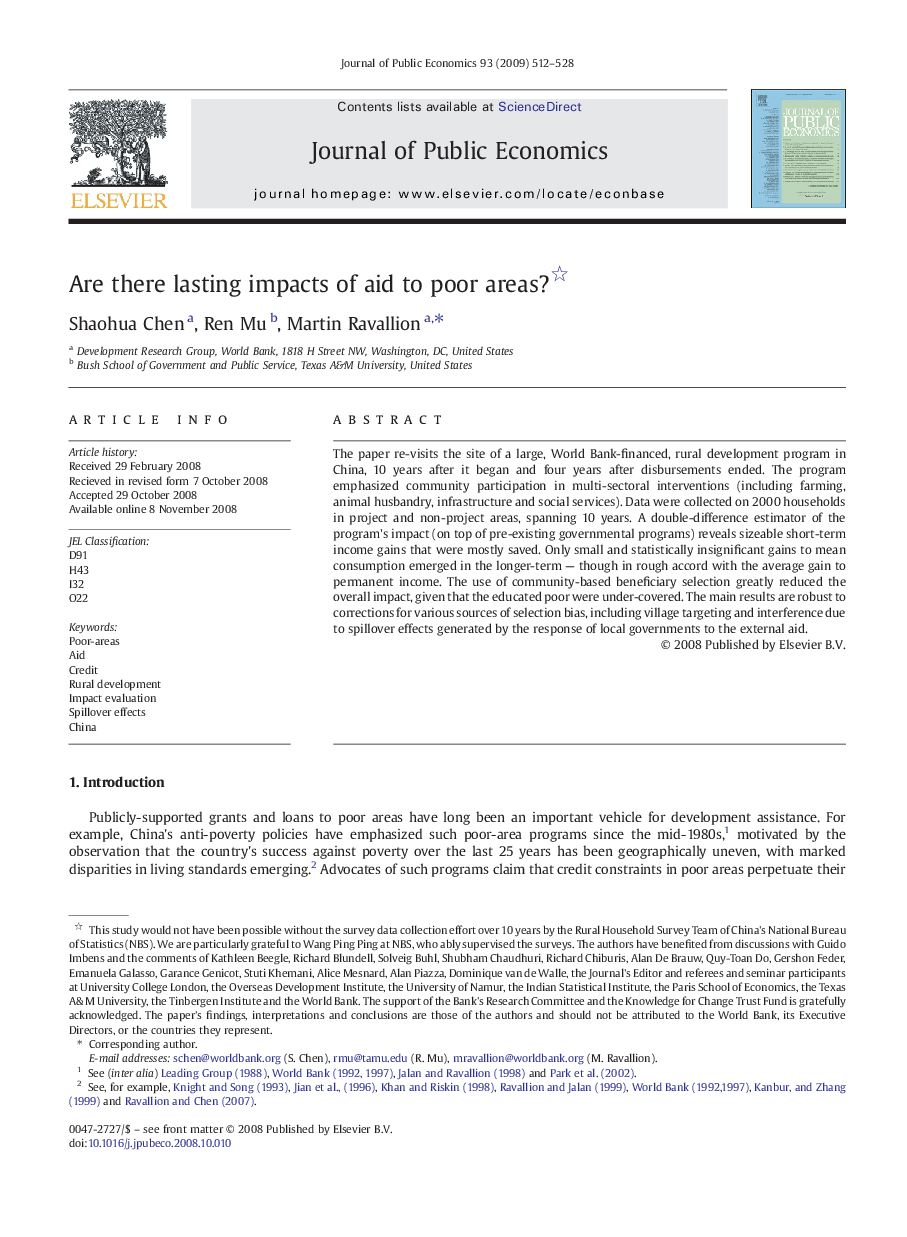| Article ID | Journal | Published Year | Pages | File Type |
|---|---|---|---|---|
| 969866 | Journal of Public Economics | 2009 | 17 Pages |
The paper re-visits the site of a large, World Bank-financed, rural development program in China, 10 years after it began and four years after disbursements ended. The program emphasized community participation in multi-sectoral interventions (including farming, animal husbandry, infrastructure and social services). Data were collected on 2000 households in project and non-project areas, spanning 10 years. A double-difference estimator of the program's impact (on top of pre-existing governmental programs) reveals sizeable short-term income gains that were mostly saved. Only small and statistically insignificant gains to mean consumption emerged in the longer-term — though in rough accord with the average gain to permanent income. The use of community-based beneficiary selection greatly reduced the overall impact, given that the educated poor were under-covered. The main results are robust to corrections for various sources of selection bias, including village targeting and interference due to spillover effects generated by the response of local governments to the external aid.
